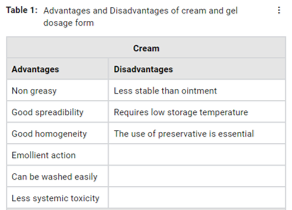Abstract
Hyperpigmentation is one of the most commonly seen skin disorders which is not a concerning health issues but it may affect the psychological aspect of a person. Hyperpigmentation is caused by the presence of excess melanin, which is the brown pigment of the skin. Products that aimed to reduce the pigmentations act by inhibiting the tyrosinase enzyme, which is the rate-limiting enzyme in the synthesis of melanin. There are many products that are currently available in the market that aims to reduce pigmentation of the skin. These products are conventionally formulated into different dosage forms such as cream, lotion and emulgel, which gains popularity due to its convenience on application. However, due to the drawbacks that these dosage forms possess such as poor stability and absorption, new formulations are presented which incorporate novel drug delivery system into the conventional dosage forms. These novel drug delivery systems are, inter alia, liposome, niosomes and microsphere. They carry benefits of controlled drug delivery, enhanced skin penetration and reduce drug toxicity as compared to the conventional dosage form, which resulted in the increase in marketed product diving into this pathway. This present article will discuss the various dosage forms, drug delivery system, its advantages, disadvantages and marketed product for pigmentation control.
Full text article
Authors

This work is licensed under a Creative Commons Attribution-NonCommercial-NoDerivatives 4.0 International License.

